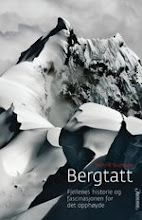"Two times during the last few weeks, my wife has been asked to write a song. A very specific song that is, a song for special occasions when a person is celebrated e.g. for a 50th birthday or a Confirmation. The way to produce songs of this type is to use keywords from a person’s life that one way or other sums up his/her main events and achievements, and to fit it into the melody lines of a familiar song – often a very simple and somewhat traditional melody. I’m sure this must be common tradition in other countries too."
"Let me summarize the main ingredients that were gathered for one of these songs: “Childhood friends, the parents’ house, boyfriends, school, marriage, kids, working at X, likes reading and picking berries”. When I saw this list, I couldn’t help thinking: Is that it? My wife is good at this stuff, but even she protested about the apparent dullness and ordinariness of the keywords. There must be more to a life than that. The question is what the keywords for the song about your life would look like."
Read the rest of the post at the Blogosphere of the European Association of Geochemistry.
-

















